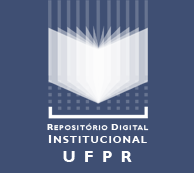Sobre a Bipedia e Destinação da Razão: Rousseau entre (contra?) Kant e Moscati
DOI:
https://doi.org/10.5380/sk.v16i3.89813Schlagworte:
Bipedia, Quadrupedia, Razão, História Natural, AntropologiaAbstract
Trata-se de examinar a suposta rejeição de Kant da tese rousseauísta sobre a bipedia humana na sua resenha, publicada anonimamente, da obra do anatomista e médico italiano Pietro Moscati. Após uma apresentação sucinta sobre o contexto da recensão, será interrogado o real interesse de Kant em contrapor um dos pilares do Segundo Discurso de Rousseau à tese do italiano sobre a origem quadrúpede da espécie humana. Ao trazer para o primeiro plano da exposição o antagonismo entre animalidade e racionalidade que de algum modo parece sustentar a argumentação de Moscati, Kant estaria na verdade avaliando os dois grandes sistemas classificatórios da História Natural que ganharam um arranjo paradoxal nas mãos de Rousseau: os de Lineu e Buffon. Com isso, é possível ampliar a importância de Rousseau na filosofia de Kant demonstrando que o pensamento do genebrino também funciona como matriz teórica para a estruturação kantiana da sua antropologia física.
Literaturhinweise
ADICKES, E. Untersuchungen zu Kants physischer Geographie. Tübingen: Mohr, 1911.
BONNET, C. “Oeuvres d’Histoire Naturelle et de Philosophie”. In: Collection Complète des Oeuvres de Charles Bonnet. Tomo XVIII. Neuchâtel: Samuel Fauche, 1783.
BUFFON. “Histoire Naturelle de l’Homme”. In : Oeuvres Complètes de Buffon. Vol. II. FLOURENS, M. (Org.). Paris: Garnier Frères, 1855.
CASSIRER, E. Kant’s Life and Thought. James Hade (Trans.). New Haven: Yale University Press, 1981.
DERATHÉ, Robert. Le Rationalisme de Jean-Jacques Rousseau. Genève: Slatkine Reprints, 1979.
DOUTHWAITE, J. The Wild Girl, Natural Man and the Monster: Dangerous Experiments in the Age of Enlightenment. Chicago: The Chicago University Press, 2002.
DUCHET, M. Antropologie et Histoire au Siècle des Lumières : Buffon, Voltaire, Rousseau, Helvétius, Diderot. Paris: François Maspero, 1971.
FONTENAY, Elisabeth. Le Silence des Bêtes : La Philosophie à l’Épreuve de l’Animalité. Lonrai: Fayard, 1998.
GERLAND, G. “Immanuel Kant, seine geographischen und anthropologischen Arbeite”, Kant-Studien, vol. 10 (1905), pp. 1-43 e 417-547.
GOLDSCHMIDT, V. Anthropologie et Politique: Les Principes du système de Rousseau. 2 ed. Paris : Vrin, 1983.
HÄSER, H. Lehrbuch der Geschichte der Medizin und der epidemischen Krankheiten. Bd. II. 3 Aufl. Jena: Gustav Fischer, 1881.
KANT, I. Antropologia de um Ponto de Vista Pragmático. Trad. Clélia Martins. São Paulo: Iluminuras, 2006.
KANT, I. Allgemeine Naturgeschichte und Theorie des Himmels. Band I. Preußische Akademie der Wissenschaften. Berlin: Walter de Gruyter, 1942.
KANT, I. Bemerkungen zu den Beobachtungen über das Gefühl des Schönen und Erhabnen. Band XX. Preußische Akademie der Wissenschaften. Berlin: Walter de Gruyter, 1942.
KANT, I. “Das Diferentes Raças Humanas”, Kant e-Prints. Campinas, Série 2, v. 5, n. 5 (2010), p. 10 - 26.
KANT, I. “Forma e Princípios do Mundo Sensível e do Mundo Inteligível”. Trad. Paulo Licht. In: KANT, I. Escritos Pré-Críticos. São Paulo: Editora da Unesp, 2005.
KANT, I. Écrits sur le Corps et l’Esprit. Trad. Gregoire Chamayou. Paris: GF Flammarion, 2007.
KANT, I. Gesammelte Schriften. Hrsg.: Bd. 1-22 Preussische Akademie der Wissenschaften, Bd. 23 Deutsche Akademie der Wissenschaften zu Berlin, ab Bd. 24 Akademie der Wissenschaften zu Göttingen. Berlin 1900ff.
KANT, I. Recension von Moscatis Schrift: Von dem körperlichen wesentlichen Unterschiede zwischen der Structur der Thiere und Menschen. Band II. Berlin: Georg Reimer. Trad. Alexandre Hahn, “Resenha do Escrito de Moscati”, Kant e-Prints, vol. 7, n. 2 (2012), pp. 4-6.
KANT, I. Vorlesungen über Anthropologie. Band XXV. Berlin: Walter de Gruyter, 1997.
KANT, I. Vorlesungen über physische Geographie (Handschrift Holstein). Band XXVI. Berlin: Walter de Gruyter, 2009.
KUEHN, M. Kant: A Biography. Cambridge: Cambridge University Press, 2001.
LINEU. Fauna Svecica. Lugdunum Batavorum: Conradum & Georg Wishoff, 1746.
LINEU. The Linnaean Correspondence. Disponível em <http://linnaeus.c18.net/Letter/L0783>. Acesso em: 24/07/2018.
MORAN III, Francis (1993). “Between Primates and Primitives: Natural Man as the Missing Link in Rousseau's Second Discourse”, Journal of the History of Ideas, vol. 54, n. 1, pp. 37-58.
MOSCATI, P. Delle Corporee Differenze Essenciali che Passano fra la Struttura de’Bruti, e la Umana. Milano: Galeazzi, 1770.
MOSCATI, P. Von dem körperlichen wesentlichen Unterschiede zwischen der Structur der Thiere und Menschen. J. Beckmann (Trad.). Götingen: Wittwe Vandenhoeck, 1771.
MUNZEL, G. F. “Menschenfreundschaft: Friendship and Pedagogy in Kant”, Eighteenth-Century Studies, vol. 32, n. 2, pp. 247-259.
REICKE, R. Kantiana. Beiträge zu Immanuel Kants Leben und Schriften. Königsberg: Theile’s Buchhandlung.
ROUSSEAU, J.-J. Discours sur l’Origine et les Fondements de l’Inégalité parmi les Hommes. Pléiade. Paris : Gernier-Flammarion, 1964.
FORTES, L. R. Salinas. Rousseau: Da Teoria à Prática. São Paulo: Ática, 1976.
SANTOS, L. R. R. “A Raiz Rousseauísta da Antropologia Física de Kant”, Estudos Kantianos, vol. 5, n. 2 (2017), pp. 125-146.
STARK, Werner (2014). “Kant’s Lectures on Anthropology: Some Orienting Remarks”. In: COHEN, A. (Org.). Kant's Lectures on Anthropology: A Critical Guide. Cambridge: Cambridge University Press.
STURM, T. Kant-Lexicon. Marcus Willascheck (Hg.). Berlin, Boston: De Gruyter, 2015.
UNZER, J. A. “Recencion”, Allgemeine deutsch Bibliothek, vol. 16 (1772), pp. 150-158.
ZAMMITO, J. Kant, Herder, and the Birth of Anthropology. Chicago: The University of Chicago Press, 2002.
Downloads
Veröffentlicht
Zitationsvorschlag
Ausgabe
Rubrik
Lizenz
Copyright (c) 2023 Leonardo Rennó Ribeiro Santos

Dieses Werk steht unter der Lizenz Creative Commons Namensnennung 4.0 International.
Autores mantém os direitos de republicação, sob condição de indicação de primeira publicação na Studia Kantiana.
Autores cedem o direito aos editores de vincular seus artigos em futuras bases de dados.
Todo o conteúdo desta revista está licenciado sob a Licença Internacional Creative Commons 4.0 (CC BY 4.0)






